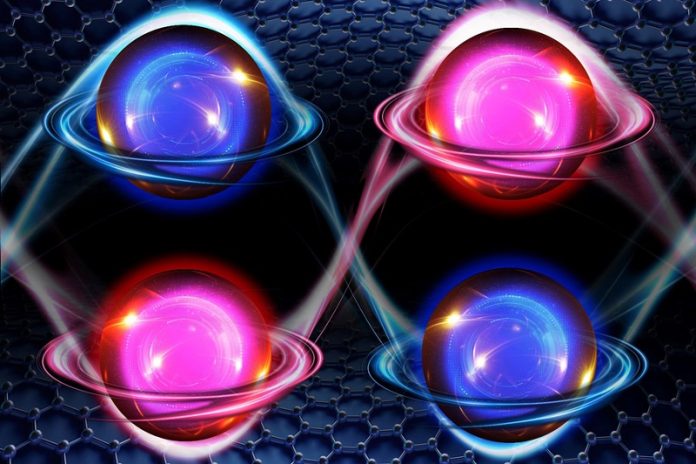
You’ve probably used a pencil to write or draw, but did you know the pencil’s lead has some mind-blowing secrets?
Scientists at MIT have found another amazing thing about the material in pencil lead when it’s super thin. Let’s dive in!
First, a quick intro about pencil lead: While it’s called “lead,” it’s actually made of a material named graphite.
When scientists take this graphite and make it as thin as one atom, it’s called graphene. Imagine a super thin chicken wire; that’s how graphene looks under a microscope.
Even though it’s super thin, it’s also super strong!
Scientists are always curious, so they play around with graphene. By stacking and twisting it in different ways, they find it can do some pretty surprising things with electricity.
This time, MIT researchers discovered that when they stacked graphene in 5 layers, it did something fantastic and very rare!
They found that this five-layer graphene acted in a special way called “multiferroic.” Now, that’s a big word!
Basically, “multiferroic” means a material can do two different things at once.
For our five-layer graphene, it shows a unique kind of magnetism and another special electronic behavior which they named “ferro-valleytricity.” Think of it like a superhero with two superpowers!
The cool part is, this dual-action property is only found when they use exactly five layers of graphene. If they use one, two, three, or even four layers, it doesn’t work. Just the five layers!
Why is this exciting? Because it can change the way we save and use data in computers. Right now, storing data on a computer uses a lot of energy and isn’t super quick.
But if we use this special graphene, we can save more data using less power and do it faster! Imagine having a super-fast laptop that doesn’t need to be charged for days!
The MIT team started by peeling thin layers from a graphite block (just like in your pencil). They then looked for those with five layers and tested them in super cold temperatures.
This cold condition is like turning off all the noise, so they could see how the electrons in the graphene acted. And guess what? They saw the two superpowers!
One of those superpowers was that the electrons behaved like tiny planets, all circling in the same direction. The other superpower was that electrons preferred to settle in one specific “valley” or energy state.
Seeing these two powers together in the five-layer graphene was like discovering a new superhero. And the MIT team found they could control these powers using just an electric field.
What does this mean for us? In the future, we might see computers and gadgets that use less energy and work faster, all thanks to this graphene magic. And to think, it all started with something as simple as pencil lead!
In short, MIT’s discovery is a big step towards better electronics. So, the next time you use a pencil, remember, there’s some amazing science hidden inside!



